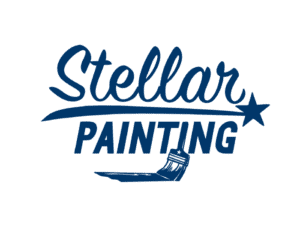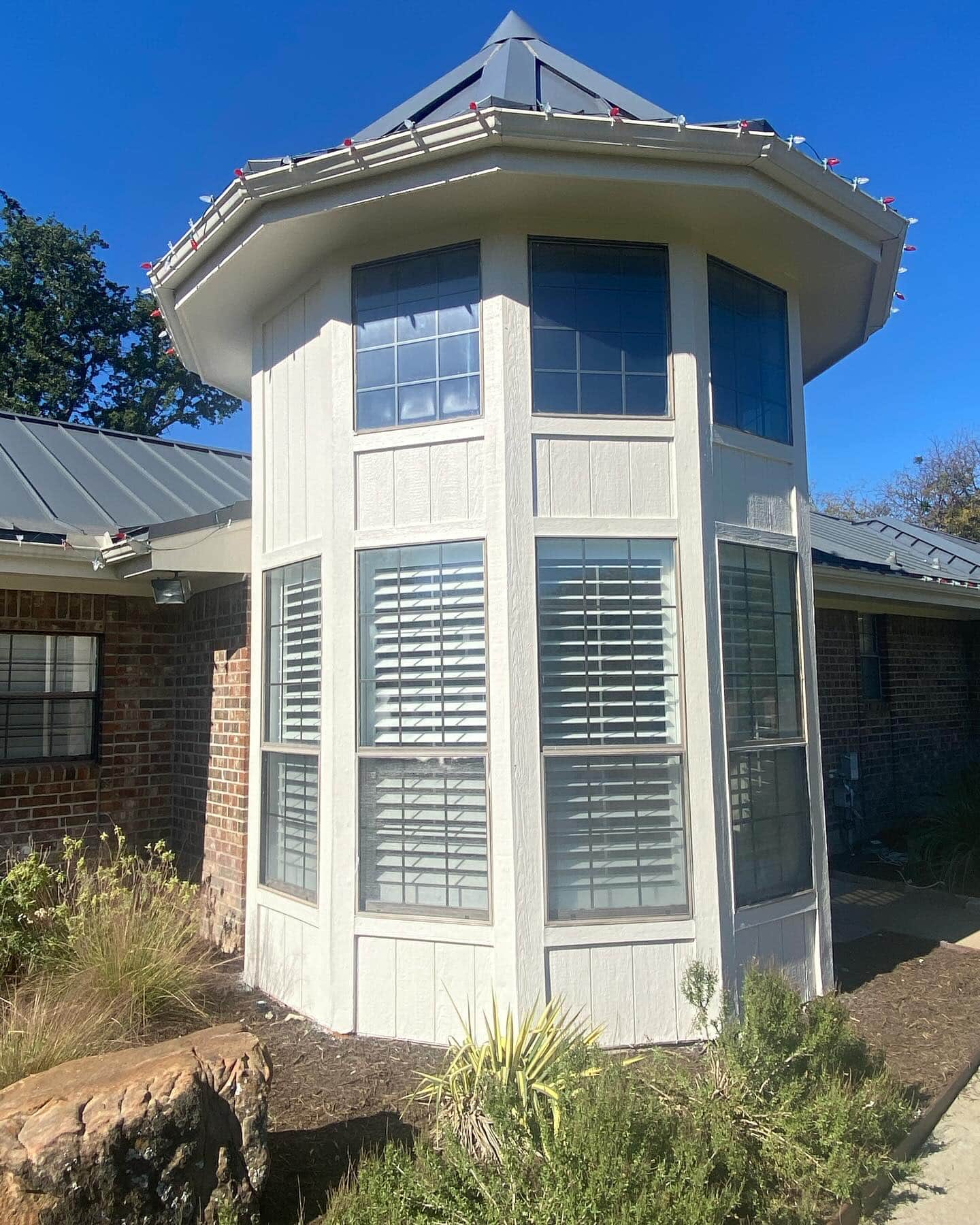Repaint Your Metal Building: Step-by-Step Guide
Revamping the exterior of a commercial property can be as transformative as choosing a new palette for an artist. As a commercial property owner or a person of color with a vision, understanding when your metal buildings require a fresh coat is paramount. When the time comes, selecting the appropriate paint and enlisting skilled painting contractors will ensure that every gallon applied embellishes and protects your investment. Preparing for this endeavor demands attention to detail and a systematic approach. Keep reading to navigate the steps leading to a glorious, enduring finish for your metal structure.
Assessing Your Metal Building for Repaint Needs
Before taking on the role of an interior painter for my metal building‘s makeover, I always begin with a thorough assessment. The task involves scrutinizing the structure’s coat to uncover the extent of deterioration—gauging whether the wear and tear have etched deep into the metal‘s DNA. This step is crucial as it influences every subsequent decision, from the choice of paint to the meticulousness required in preparation. Moreover, it is fundamental to understand the type of paint clinging to the surface and whether it’s gripped to metal or masonry. The difference could be as stark as the contrast between a well-worn patina and the vibrant hue of orange on a new paint job. Without this knowledge, one might as well be painting blindfolded, oblivious to the needs of the surface beneath.
Identify the Extent of Paint Wear and Damage
During my initial assessment, my attention to detail is paramount. I’m on the lookout for signs of paint deterioration that indicate the need for a new coat. I note faded areas and inspect for rust spots, just as a house painter in Houston would check for humidity damage in a bathroom. This task requires more than just carpentry skills; it demands an artist’s precise judgment and attention to detail, ensuring the surface is primed for the masterpiece to follow.
Determine the Type of Existing Paint and Surface Material
Identifying the type of existing paint and the surface material is not unlike matching the right stain to a piece of cabinet painting. Both tasks require a nuanced understanding of materials and their properties. Knowing whether the surface was previously treated with an oil-based or latex paint can reveal much about the paint‘s lifespan and, by extension, the cost implications of the fresh coat. Similarly, recognizing that metal surfaces might also be coated with a specialized roof coating can be a priceless gift for any painter, as it can directly impact the overall durability and cost of painting a room—or, in this case, an entire metal building.
| Aspect | Observation | Implication |
|---|---|---|
| Type of Paint | Oil-based/Latex/Specialized Coating | Determines preparation steps and longevity |
| Surface Material | Metal with/without Roof Coating | Influences selection of repaint materials and techniques |
| Cost Considerations | Varies with Paint and Surface Type | Impacts the budget for the project and the choice of paint |
Choosing the Right Type of Paint for Metal Buildings
Selecting the ideal paint for a metal building is not just about aesthetics; it’s about making a confident and informed decision. It necessitates careful consideration of the structure’s interaction with the environment. As an accomplished painter, my recommendations hinge on the climate’s temperament and the building‘s specific use. I weigh the merits of water-based paints for their ecological benefits against the durability of oil-based options, especially when faced with the industrial demands of a structure within a manufacturing facility. My approach is pragmatic, seeking harmony between a paint‘s inherent properties and the building‘s longevity, always focusing on the end goal: a finish that refuses to falter, come rain or shine.
Consider Weather and Environmental Factors in Paint Selection
When selecting paint for a metal building, I consider its exposure to the elements and how climatic conditions might impact its appearance and structural integrity. For instance, I would opt for paints that combat mold and rust in areas with high humidity. It’s a balance of aesthetics, practicality, and price – something I emphasize when collaborating with a commercial painting company to ensure the visual and functional requirements are met. This attention to detail is similar to what one might find in residential interior painting, where the choice of paint can significantly affect the room‘s interior design and mood.
- Analyzing the local climate for potential impact on the paint‘s durability
- Consulting with commercial painting experts for product recommendations
- Evaluating cost-effectiveness without compromising on quality.
Understanding Oil-Based vs. Water-Based Options
Deciding between oil-based and water-based paints is pivotal when considering the resilience and visual appeal of metal surfaces in structures like garages. Virtual color analysis can be instrumental in picturing how custom colors manifest on a door or other metal features, allowing for a tailored look that complements a property‘s overall design. Oil-based paints, known for their robustness, may provide the durable shell needed for high-traffic areas, whereas water-based options offer an eco-friendly application with easier cleanup.
| Paint Type | Advantages | Best Used For |
|---|---|---|
| Oil-Based | Durable; resists wear and tear | Garage doors, industrial settings |
| Water-Based | Environmentally friendly; easy cleanup | Interior metal surfaces, custom colors |
Preparing the Metal Surface for Painting
Turning our attention to the preparation phase, a critical stride towards ensuring a sleek and long-lasting finish, the initial focus is cleaning the accumulated dirt, grease, and rust from the metal surfaces. Every grime or oxidized metal speck is methodically removed, akin to scrubbing away the remnants of soot from a fireplace, to allow the fresh coat of paint to adhere correctly. This meticulous approach ensures that the surface is perfectly primed for the transformative power of paint, reassuring you of the quality of the process.
Cleaning Dirt, Grease, and Rust Off Surfaces
Enlisting exterior painting services ensures expert removal of blemishes from your garage door, a vital step in the repaint process akin to a stylist ensuring the skin is impeccably cleansed before applying makeup. As they strip away years of accumulated dirt, grease, and weathering, the metal regains a pristine quality, ready for a fresh coat that revitalizes its appearance. As essential as selecting a dish from a well-curated menu, this process provides the clean slate needed for superior adhesion and longevity of the new paint application.
Sanding and Priming as Needed for a Smooth Base
Within my community, knowledge gleaned from years of residential painting comes into play as I address the metal building‘s needs, demonstrating the shared principles between working with stucco and concrete. Whether it’s smoothing a bumpy exterior wall or ensuring a ceiling fan‘s mount is free from rust, I approach sanding intending to create the most receptive surface for primer—essential to paint adhesion and the overall finish.
Before applying a coat of primer, I scrutinize every inch of the metal for any residual imperfections; attention to detail is vital, as even the slightest rough patch can mar the final presentation.
| Preparation Step | Purpose | Outcome |
|---|---|---|
| Cleaning and Degreasing | Remove contaminants for a clean bonding surface | Metal ready for abrasive work |
| Sanding | Smooth rough areas and edges | Even polished surfaces for priming |
| Priming | Seal and prepare for topcoat | Strong adhesion and enhanced durability |
Techniques for Applying Paint on Metal Structures
Transitioning from selecting the paint to the application process brings me face-to-face with a critical juncture in repainting any structure, including metal buildings. In this phase, I’m akin to an artist deciding on their tools—be it the delicate brushes that could detail the landscape of a living room wall, the rollers capable of laying down uniform coats, or the sprayers that efficiently cover vast expanses like industrial equipment coated in protective epoxy. Drawing on the experience of an expert and using insights from platforms like HomeAdvisor, I meticulously evaluate which method will yield the most durable and high-quality finish. The aim? To artfully apply paint as a hairstylist applies highlights with precision and care, ensuring that each successive layer bonds seamlessly, enhancing the building‘s resilience and aesthetic appeal.
Brush, Roll, or Spray? Selecting a Method
Ensconced in the intensity of New Jersey’s traffic flow, I find the quiet rhythm of using a brush lends itself to intricate work, much like detailing a vintage car by hand rather than through an automated system. On the other hand, employing a roller mirrors the efficiency needed in preparing a dining room for a swift redesign, where broad strokes can cover large sections with a uniform sheen. Meanwhile, the precision of a spray technique, often favored in the expansive warehouses of North Carolina, delivers a swift and even application akin to the swift swiping of a card for a quick transaction.
Applying Multiple Coats for Durability and Finish Quality
When applying paint on metal buildings, nothing contributes to the durability and quality of the finish quite like the strategic layering of multiple coats. Just as a meticulously crafted mural in a basement demands layers to bring its design to life or a fashion collection requires the perfect alignment of fabric and color, the strength and appeal of a paint job similarly rely on careful application.
- Initial layer ensures proper coverage and adhesion.
- Subsequent coats build up thickness for enhanced durability.
- Final touching-ups refine the finish for design perfection.
Utilizing painting services that recognize the value of this can make all the difference in both protective and aesthetic terms. The approach carries a semblance of precision in creating any lasting design—attention to the layering process is imperative.
Ensuring Safety Measures During the Painting Process
As I embark on repainting projects from Ohio‘s residential suburbs to South Carolina’s industrial precincts, a commitment to safety is as valuable as gold. Remember, painting isn’t simply a matter of aesthetics but requires caution and care.
In South Carolina, where the sun blazes as fiercely as the pride in its historic homes, I ensure my protective gear is as indispensable as a handyman‘s toolkit. Safety glasses shield my eyes, gloves safeguard my hands, and respirators keep harmful fumes at bay.
Whether it’s a quaint house in Ohio or a sturdy metal structure down south, my protocol includes securing the site to prevent tripping hazards and ensuring all equipment is handled responsibly. Elevated work demands fall protection; I never undermine the use of harnesses and anchors:
| State | Precaution | Equipment |
|---|---|---|
| South Carolina | Heat exhaustion prevention | Cooling vest, hydration |
| Ohio | Tripping hazard mitigation | Safety signage, tidy workspace |
Conclusion
Repainting a metal building demands a keen eye for assessing existing damage and understanding paint and surface types. Choosing the proper paint is crucial, factoring in environmental influences and balancing quality with practicality. Thorough preparation of the metal surface is paramount, ensuring that the cleaning, sanding, and priming lead to a smooth and receptive base for painting. Ultimately, correct application techniques and adherence to safety protocols guarantee a durable finish that enhances the structural integrity and aesthetic appeal of your metal building.



